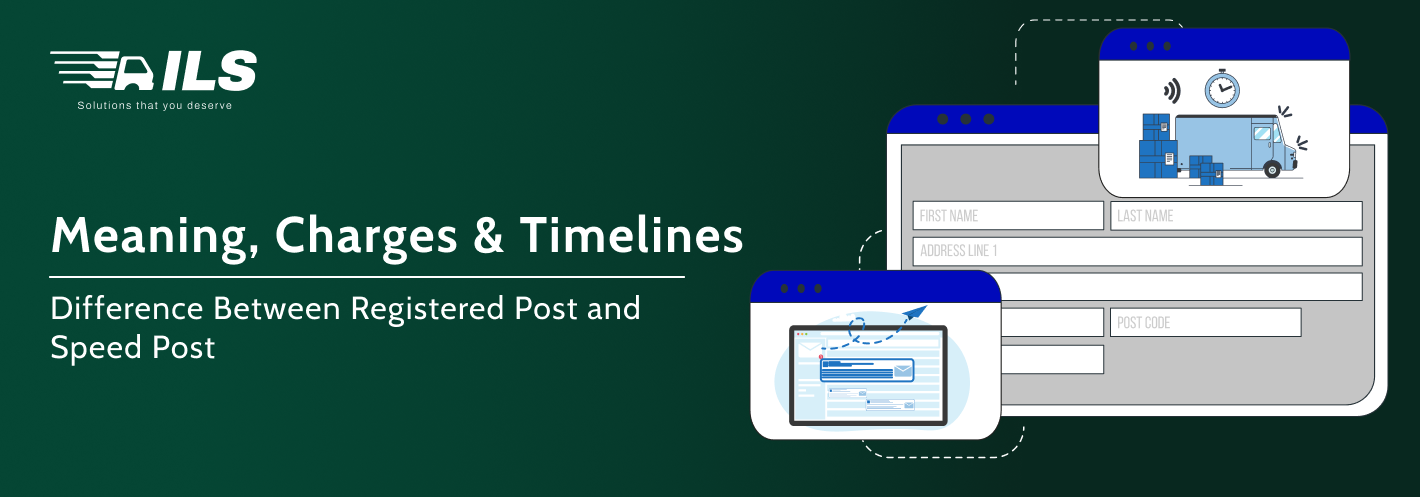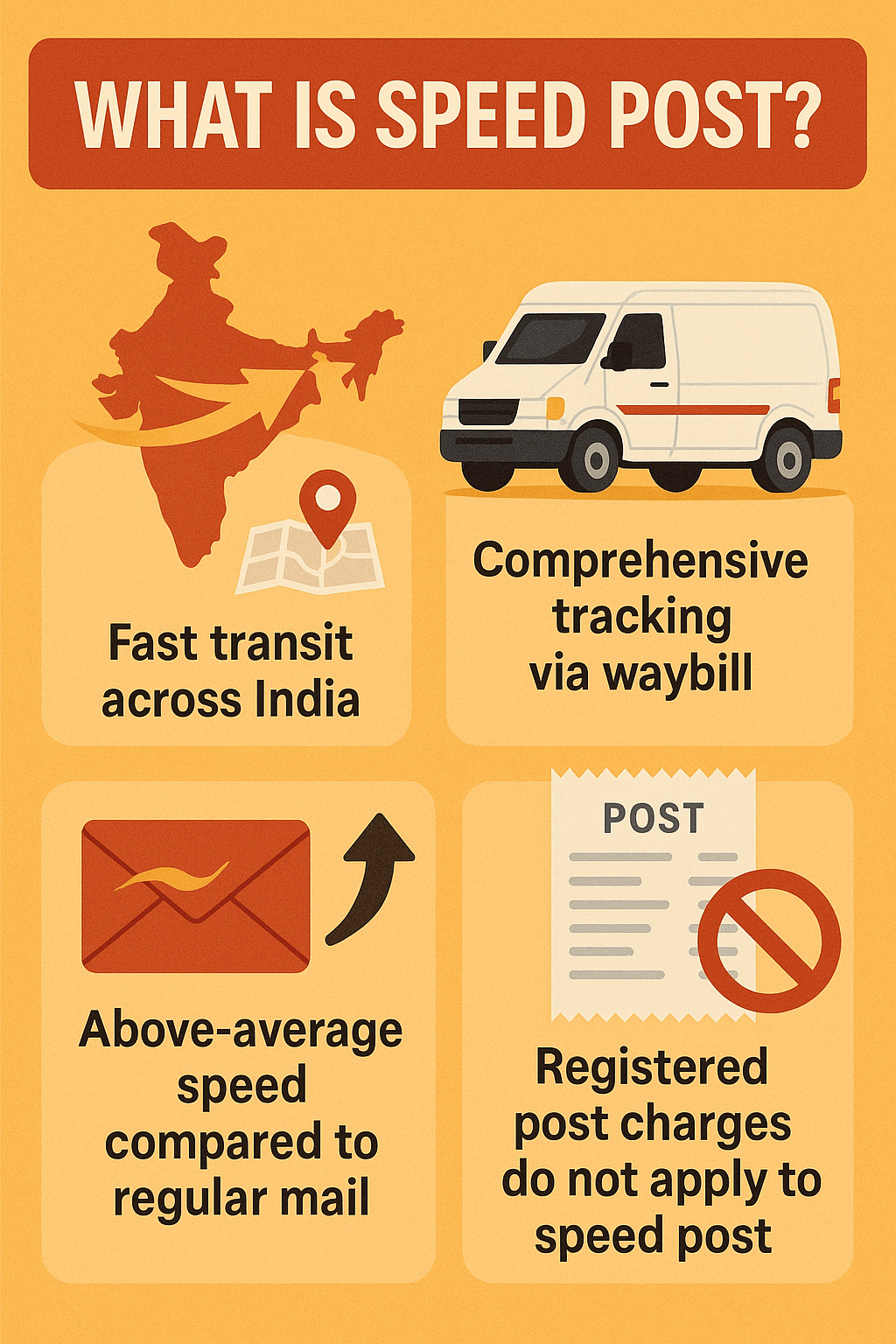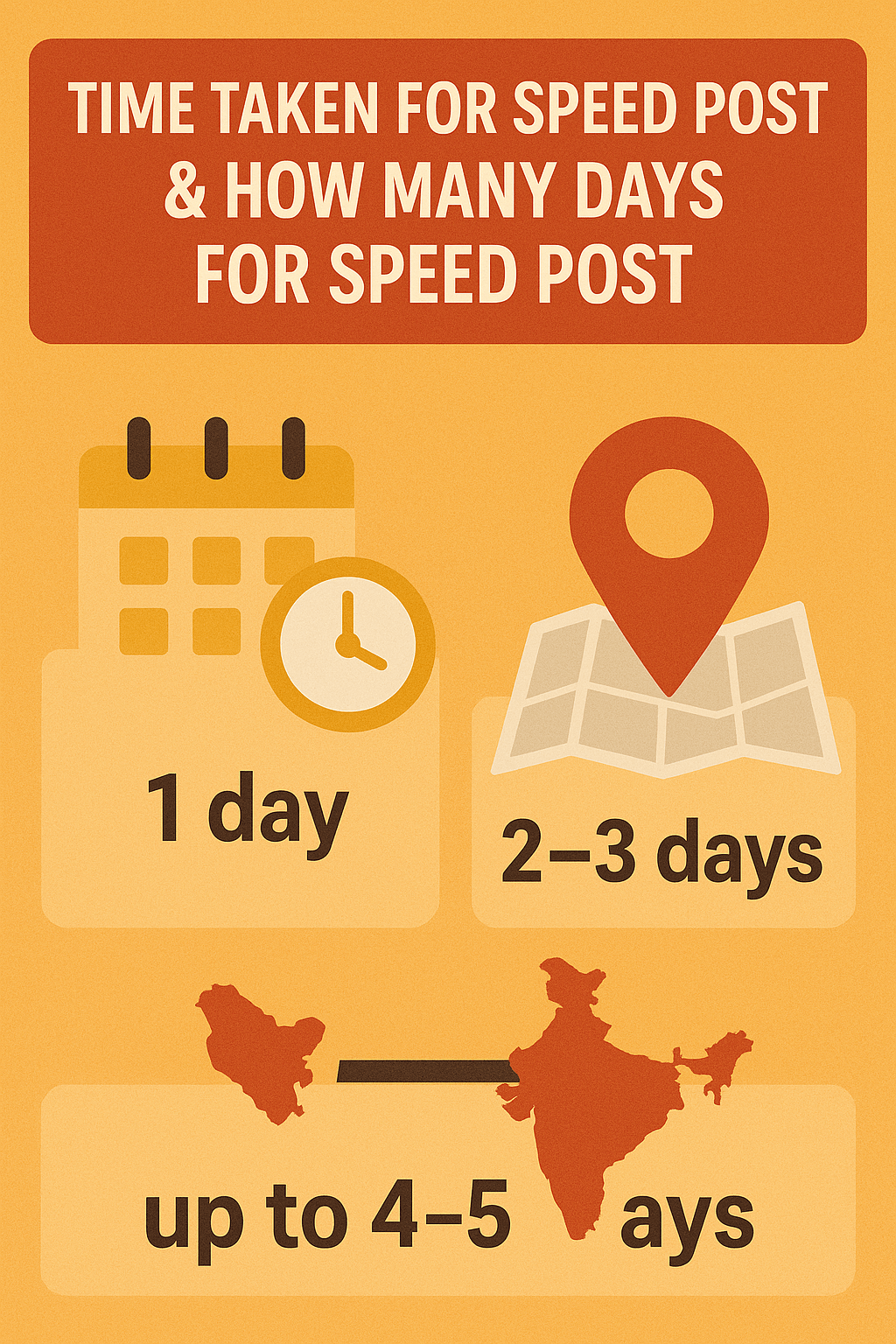Difference Between Registered Post and Speed Post: Meaning, Charges & Timelines
Last-Mile Delivery
In this detailed guide, we explore the difference between registered post and speed post, explaining the meaning of inland speed post, registered letter, registered post charges, time taken for speed post, and how many days it takes for speed post deliveries. We also take a look at the ILS Portal Courier Partners List, including India Post, Ekart, DTDC, Delhivery, Blue Dart, XpressBees, Ecom Express, Smartr Logistics, Amazon Shipping, and Shree Maruti Courier, and how each handles these services.
Also Read: DigiPin India Post
1. What is Registered Post?
A registered post is a service offered primarily by India Post that provides secure mailing with proof of posting and delivery. It is also referred to as a registered letter. The key features include:
- The sender gets a receipt when posting.
- Delivery is only made after the recipient signs.
- Compensation in case of loss or damage.
- Registered post charges are generally higher than ordinary mail but lower than express services.
This service is ideal when you need documented proof of delivery or dispatch.
2. What Is Speed Post?
Speed Post is India Post's express delivery service. When someone asks what speed post is, they refer to a swift, trackable service with guaranteed delivery timelines. For inland (within India) shipments, this is often called inland speed post. The features include:

- Fast transit across India.
- Comprehensive tracking via waybill.
- Above‑average speed compared to regular mail.
- Registered post charges do not apply to speed post, which has its pricing structure.
3. Inland Speed Post Meaning
The term inland speed post refers to speed post services within the country, i.e. domestic express mail. It stands in contrast to international air mail services. Inland speed post provides:
- Delivery typically within 1–3 days in metro areas.
- Tracking and limited compensation options.
- A higher rate than ordinary mail or registered post, but faster.
4. Difference Between Registered Post and Speed Post
Let's outline the primary difference between registered post and speed post in terms of meaning, service level, and costs:
| Feature | Registered Post | Speed Post / Inland Speed Post |
|---|---|---|
| Purpose | Proof of dispatch and delivery | Fast delivery within India |
| Tracking | Minimal or none | Full online tracking |
| Delivery time | Slower — depends on destination | Guaranteed speed: often 1–3 days in metros |
| Compensation | Compensation available in case of loss/damage | Some compensation; faster handling |
| Cost / Registered post charges | Lower than speed post, but more than ordinary mail | More expensive; separate speed post charges |
| Signature on delivery | Mandatory | Usually mandatory |
| Ideal use cases | Legal documents, certified letters | Time‑sensitive parcels, urgent documents |
- Registered post is named after the registered letter system, where proof of posting and delivery is key.
- Speed post focuses on the time taken for speed post and how many days it takes for speed post, whereas registered post focuses on security and documentation.
5. Registered Post Charges & Speed Post Charges
Understanding registered post charges and speed post charges helps in selecting the exemplary service:
- Registered post charges: These fees are based on weight and include a nominal extra cost for the registration. They're modest and suited for documents.
- Speed post charges: Speed post fares depend on size, weight, destination (within inland zones), and urgency level. Additional services cost more.
Both services publish updated rate charts, it's wise to check India Post's official site for current rates.
Also Read: https://ilsportal.io/blogs/delivery-courier-shipping-charges-india
6. Time Taken & How Many Days for Speed Post
When considering the time taken for speed post and asking how many days for speed post, inland speed post typically delivers in:

- 1 day within major metros and major cities.
- 2–3 days for more remote or rural areas.
- Sometimes up to 4–5 days for some South‑North or East‑West cross‑country routes.
Expect reliable delivery. Note: Registered post can take significantly longer depending on the distance.
7. Registered Letter vs Speed Post
The phrase registered letter refers to the older registered post system. It contrasts with speed post:
- Registered letter service (i.e. registered post) focuses on accountability and record‑keeping.
- Speed Post focuses on what Speed Post is in terms of fast inland delivery.
If you're mailing valuable documents and need proof of delivery, go with a registered letter. For fast shipping, speed post is better.
8. Integrating ILS Portal Courier Partners
The ILS Portal Courier Partners List includes both public and private providers:
India Post offers both registered posts and inland speed posts. Private partners like Ekart, DTDC, Delhivery, Blue Dart, XpressBees, Ecom Express, Smartr Logistics, Amazon Shipping, and Shree Maruti Courier primarily provide express and courier services.
While many private couriers offer their version of express service (similar to inland speed post), only India Post provides the traditional registered post and regulated registered letter service.

Tips when comparing services:
- For secure, legally compliant deliveries, only India Post's registered post qualifies.
- For quicker delivery or parcel shipments within the ILS Portal Courier Partner ecosystem, private partners offer fast transit, often in competition with the time taken for speed post from India Post.
9. User-Centric Use Cases
- When to choose registered post: Mail critical legal notices and documents that need signature and proof; you prioritise security over speed.
- When to select speed post/inland speed post: When sending parcels or time-sensitive documents domestically, you care about delivery speed and tracking.
- When to consider private courier partners: For heavier parcels, e‑commerce shipments, or services where India Post inland speed post might be slower or less convenient.
10. Quick Comparison Recap
- Difference between registered post and speed post: One is secure and traceable, the other is faster and trackable.
- Registered post charges are modest, speed post costs more but yields speedier delivery.
- Time taken for speed post and how many days for speed post: usually 1–3 days for inland routes.
- Registered letter refers to the same as registered post.
- Inland speed post means domestic express shipping.
- Among the ILS Portal Courier Partners List, India Post uniquely offers registered posts, while private providers compete in terms of speed and parcel volume.
Conclusion
Choosing between registered post and inland speed post depends on your priorities:
Choose registered post (registered letter) when proof, security, and legal formalities matter, and you're okay with slower delivery. Choose speed post or partner services for faster transit, full tracking, and assured delivery times. Understanding the time taken for speed post and how many days it takes for speed post helps set expectations.

